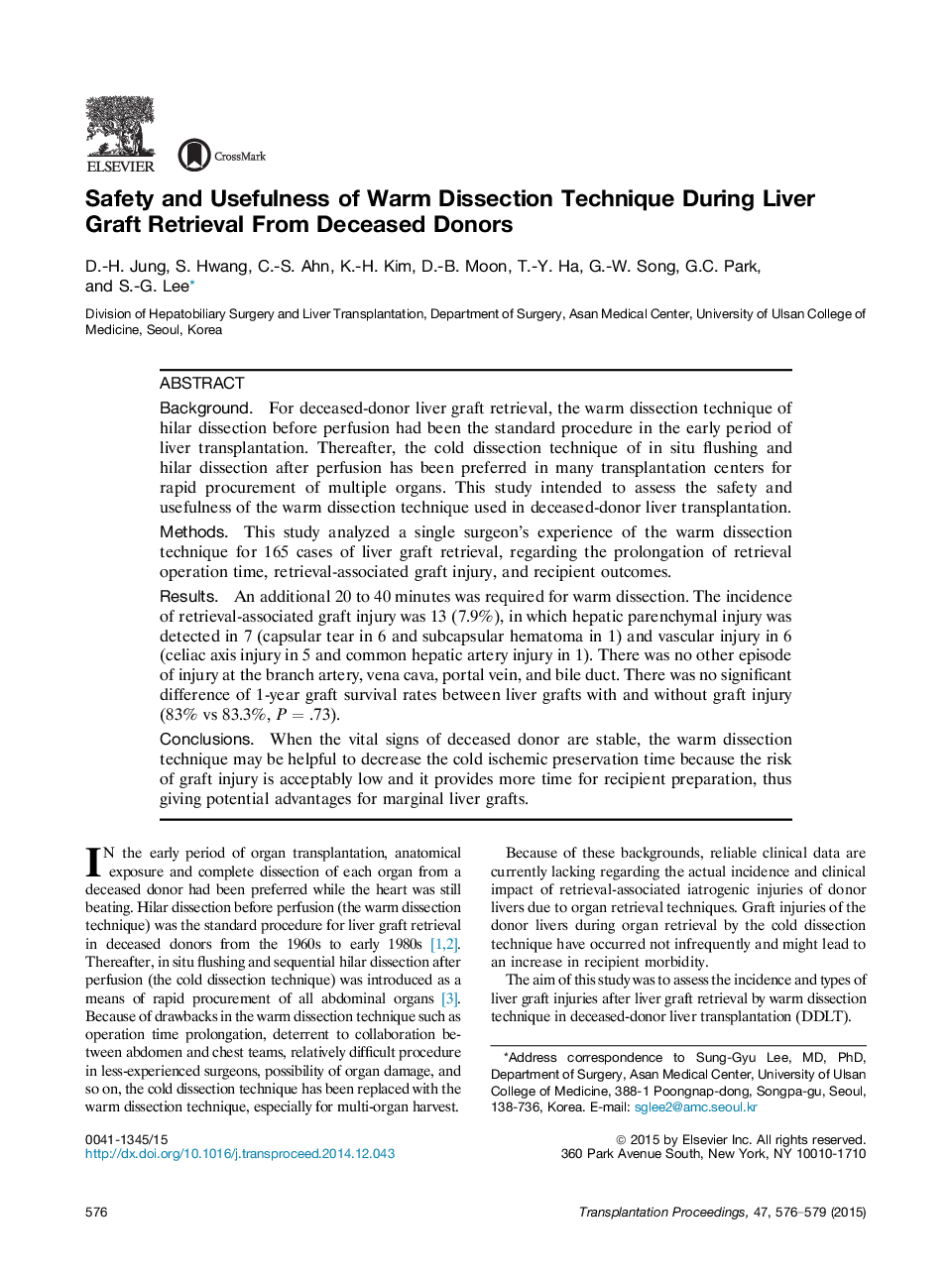| کد مقاله | کد نشریه | سال انتشار | مقاله انگلیسی | نسخه تمام متن |
|---|---|---|---|---|
| 6247770 | 1284520 | 2015 | 4 صفحه PDF | دانلود رایگان |
- This study analyzed the single surgeon's experience of hilar dissection before perfusion for 165 cases of liver graft retrieval from deceased donors.
- The incidence of retrieval-associated graft injury was 13 (7.9%).
- There was no significant difference in 1-year graft survival rates between liver grafts with and without graft injury.
- The warm dissection technique may be helpful to decrease the cold ischemic preservation time and also have potential advantages in donors whose liver are in the marginal quality.
BackgroundFor deceased-donor liver graft retrieval, the warm dissection technique of hilar dissection before perfusion had been the standard procedure in the early period of liver transplantation. Thereafter, the cold dissection technique of in situ flushing and hilar dissection after perfusion has been preferred in many transplantation centers for rapid procurement of multiple organs. This study intended to assess the safety and usefulness of the warm dissection technique used in deceased-donor liver transplantation.MethodsThis study analyzed a single surgeon's experience of the warm dissection technique for 165 cases of liver graft retrieval, regarding the prolongation of retrieval operation time, retrieval-associated graft injury, and recipient outcomes.ResultsAn additional 20 to 40 minutes was required for warm dissection. The incidence of retrieval-associated graft injury was 13 (7.9%), in which hepatic parenchymal injury was detected in 7 (capsular tear in 6 and subcapsular hematoma in 1) and vascular injury in 6 (celiac axis injury in 5 and common hepatic artery injury in 1). There was no other episode of injury at the branch artery, vena cava, portal vein, and bile duct. There was no significant difference of 1-year graft survival rates between liver grafts with and without graft injury (83% vs 83.3%, PÂ = .73).ConclusionsWhen the vital signs of deceased donor are stable, the warm dissection technique may be helpful to decrease the cold ischemic preservation time because the risk of graft injury is acceptably low and it provides more time for recipient preparation, thus giving potential advantages for marginal liver grafts.
Journal: Transplantation Proceedings - Volume 47, Issue 3, April 2015, Pages 576-579
